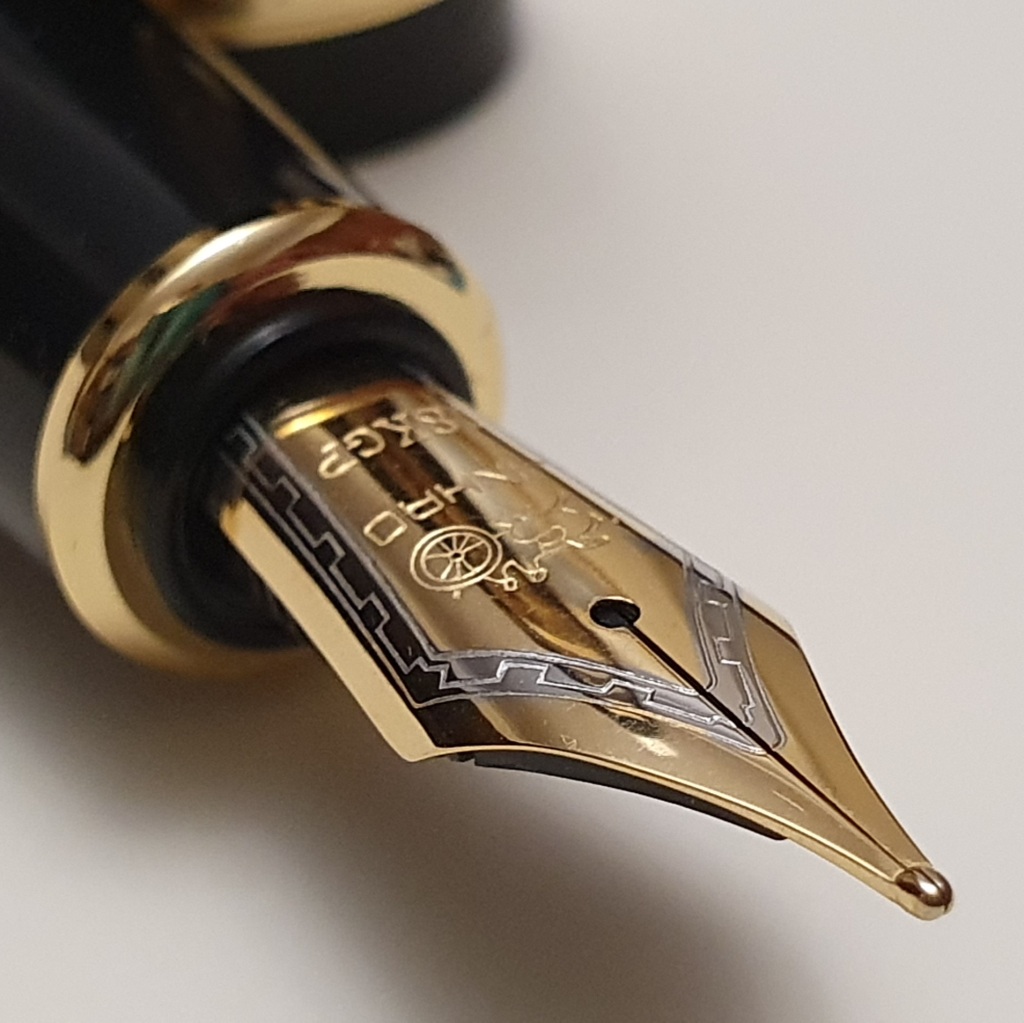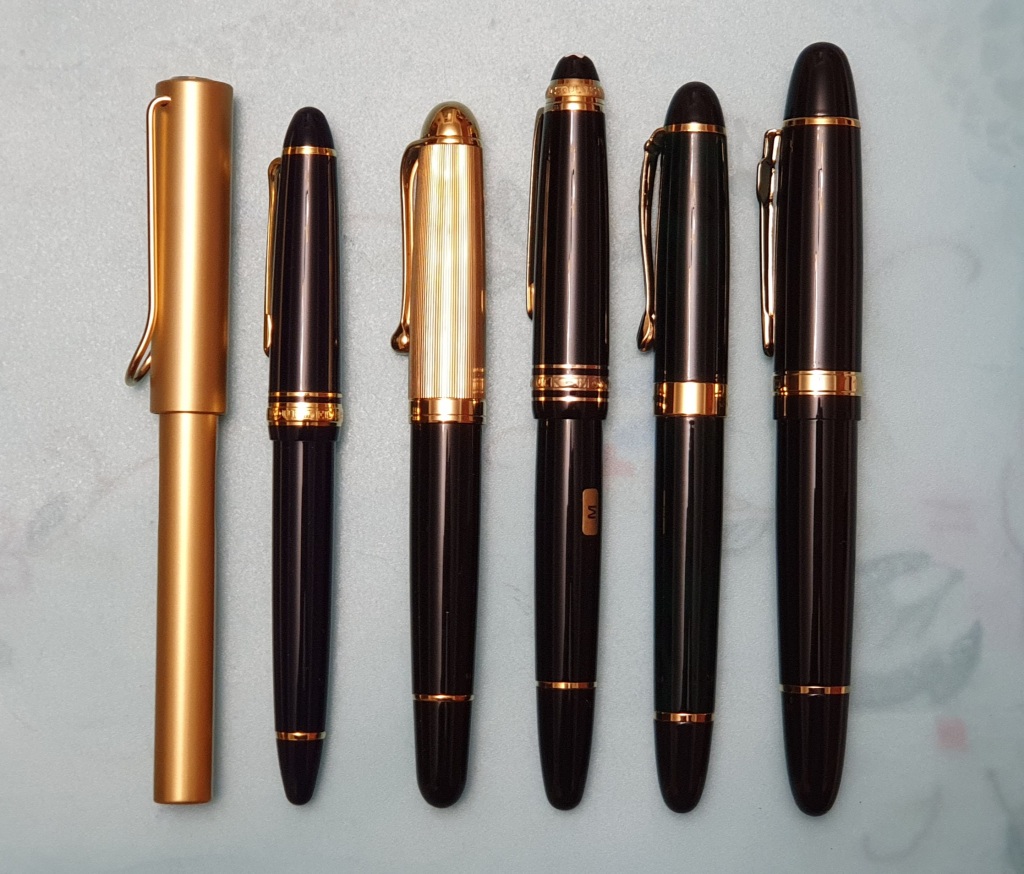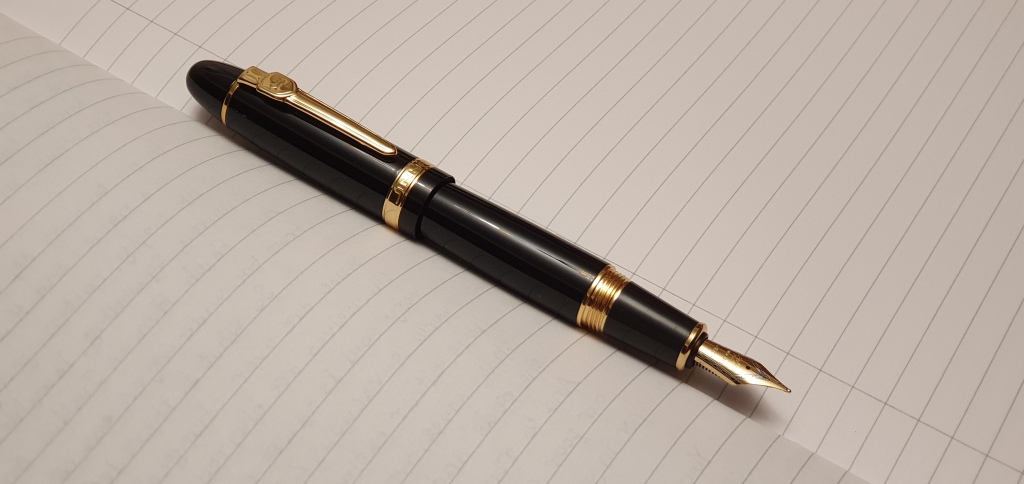One of life’s great pleasures is writing with a fountain pen. My lifelong habit of journaling, or keeping a diary, is another and to combine these two makes for a great start to a day. Just having ten minutes, to collect my thoughts and reflect on the previous day and then record it in ink and “offload” this into my archive, is something I cannot do without.
I have been keeping a personal diary in one form or another since 1976. The size has varied over the years from chunky A6 page-a-day books in the seventies and eighties (in which I used “reverse writing” with my Sheaffer No Nonsense pens to get extra fine lines), to A4 volumes, 5 year diaries, and even tried typing for a few years. In recent years I have settled on A5 as being the format that works best for me. For some days, I write in longhand and for others, typically work days, I prefer to do a balloon diagram with bullet point notes, of what progress was made on my various ongoing tasks.
This year, I have enjoyed using an A5, page-a-day diary from Rymans. It has what they call a “Soft Cover” but is a stiff cover but finished in a soft texture material that feels like leather. The cream coloured pages give you 23 rows with a row height of 7.9mm which is reasonably wide and I find this ideal. Currently, I use my Diplomat Excellence A Plus, with a Fine steel nib and Pilot Iroshizuku Shinkai, blue-black ink. It is one of those combinations that is a marriage made in Heaven and which you never want to end.
Last week, while browsing in Paperchase, I spotted an A5, page-a-day diary in an attractive viridian patterned, textured soft-back cover . On a quick flick through, I noticed that the line spacing was wide (actually 7.5mm), that it was neatly bound with stitching and opened flat. It was also in a sale with 30% off and I decided to buy it.

Only when I got home did I notice that the “page-a-day” description was a bit misleading for the weekends , as Saturday and Sunday had to share a page. At least this meant that you could always find your weekends on the right-hand page of a spread, but I was disappointed. My wife helpfully suggested that I “just don’t do as much” at the weekends to have less to write about but I was not convinced.

Today, in a Goretex jacket for the rain, I trudged out to Golders Green High Road to visit Rymans to see if they had any diaries. I found the diary section and looked at a Ryman hard back, A5 page-a-day diary at £7.50 but the line spacing was clearly narrow, unlike my 2020 version so I dismissed it.
But then I noticed nearby, the Ryman Soft Cover Diary, also a page-a-day but a little more expensive at £10.99. I found a beautiful forest green one but could not inspect the line spacing or the weekend arrangements as it was sealed in cellophane. Other colour options were an equally lovely dark red or yellow ochre, which would have been great with my Diamine Cherry Sunburst ink, or perhaps a KWZ Honey or Diamine Honey Burst.
Since these were all sealed, I could not inspect any of them for row height or to check that Saturdays and Sundays were still afforded a page each as in my 2020 diary. Call me reckless, but I took a gamble and bought it anyway. I went for the green. The sales assistant favoured the yellow ochre version but when I said that I preferred the dark green he said “Like your jacket!” to which I had to admit that my colour choices were rather predictable.

Back home, I sliced off the cellophane for the moment of truth. Would there be wide line spacing and would there be whole pages for Saturdays and Sundays? Yes, to both! I can look forward to another year of journaling with my lovely Diplomat. It has a pleasant, fountain pen friendly paper. Other features are a ribbon book mark, an expandable pocket inside the back cover, and elastic pen loop (which I do not use) and an elastic closure – which is useful.

Today I have just seen the sad news that Sir Sean Connery has died, at the age of 90. How I loved all those early Bond films, and going to the local cinema with my late father. “Do you expect me to talk?” “No Mr Bond, I expect you to die!” So that is a piece of news for today’s entry in my diary. RIP.
This has been an unique year, “unprecedented” in our lifetimes as many have said and we still have two months to go. My year 2020 and lockdown activities are well recorded. Flicking through the blank pages of my next year’s diary it is hard to imagine what I might be doing in the months to come. Let’s all hope for better times ahead.




















